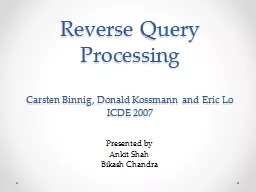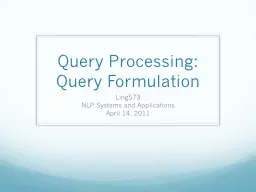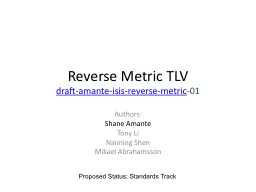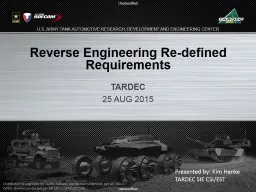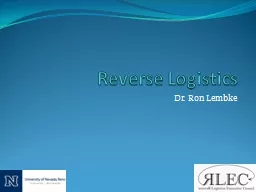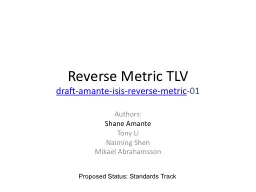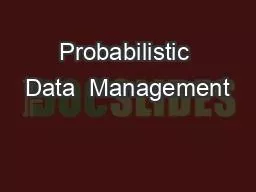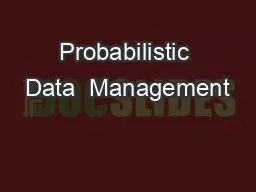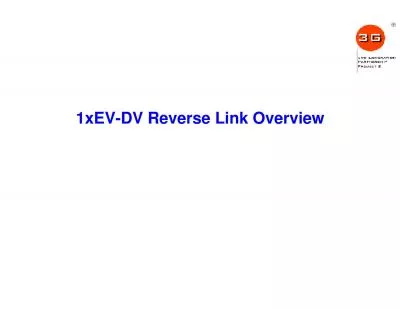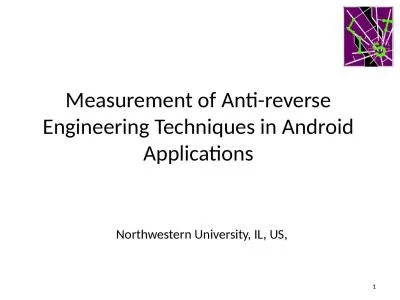PPT-Reverse Query
Author : kittie-lecroy | Published Date : 2017-07-18
Processing Carsten Binnig Donald Kossmann and Eric Lo ICDE 2007 Presented by Ankit Shah Bikash Chandra Motivation Testing database applications requires generating
Presentation Embed Code
Download Presentation
Download Presentation The PPT/PDF document "Reverse Query" is the property of its rightful owner. Permission is granted to download and print the materials on this website for personal, non-commercial use only, and to display it on your personal computer provided you do not modify the materials and that you retain all copyright notices contained in the materials. By downloading content from our website, you accept the terms of this agreement.
Reverse Query: Transcript
Download Rules Of Document
"Reverse Query"The content belongs to its owner. You may download and print it for personal use, without modification, and keep all copyright notices. By downloading, you agree to these terms.
Related Documents

